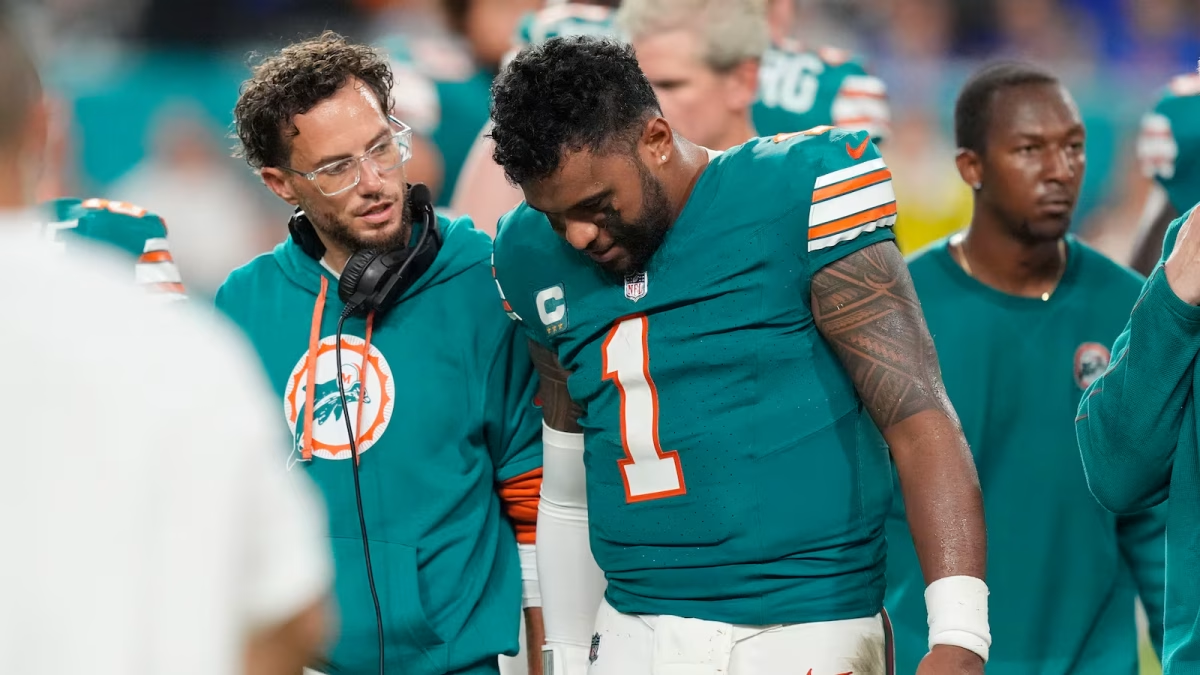On Thursday September 12, 2024, amidst an overwhelming Buffalo Bills beatdown, Miami Dolphins Quarterback, Tua Tagoviloa, went down after colliding with Bills player, Damar Hamlin.
As medical staff rushed to the field to check on the fallen player, immediate concerns began to arise. As reports came out in the hours following the game, doctors confirmed Tua had indeed suffered a concussion, his third in the last 24 months.
Immediate support came from his teammates and fans, but media discussions about the future of his career immediately began to pop up, many of which advocated that Tua walk away from football.
Beyond football, sports have a long history with devastating injuries spelling health complications for players later in life. Constant head trauma and other repeated injuries are bound to affect performance upon return.
Regarding Tua’s case, most of the media is right. If you see where this string of injuries leads, it’s not good. The sensible thing would be to hang up the cleats, but it’s merely impossible to expect that.
The elephant in the room is the recency of Tua Tagoviloa’s current contract with the Dolphins. $212 million over four years with $167 million guaranteed is no small matter.
I want to stress the meaninglessness any dollar amount has in the case of extremely serious circumstances, but the fact is that the numbers hold a lot of influence. As Tua expects to get paid, the Dolphins are also expecting to have a star quarterback on the field.
Those contract numbers highlight an alarming trend we see in professional sports: players are getting paid too much and get hurt too often. Part of this can be attributed to the way American youth leagues are set up, focusing on maximizing repetitions in competition.
More games equal more time to develop in-game intelligence, transferable to professional competition. Competitive young athletes travel on a constant basis to compete in tournaments nationwide and have pressure to be scouted and ranked at very young ages.
While this system produces excellent players, these young stars often enter the leagues with a history of injuries. When an athlete gets hurt once, it’s very likely they’ll get similar injuries later.
Coupled with the exorbitant contracts these players receive, it puts heavy pressure and expectation that athletes struggle to match. Discussion over their responsibility is fair, but it often gets overshadowed by the equally competitive opposition they face.
Teams are just better nowadays. Advances in training, health, and performance tracking give athletes the chance to push the average player’s ability to be higher than they’ve ever been before.
This constant upward trajectory also bleeds into contract negotiations as star players always compare themselves to each other. If someone breaks a contract record, the next player up for renewal will ask for more.
All of this is to say that we shouldn’t even be thinking about that when we see cases like Tua Tagoviloa or Damar Hamlin who suffered an on-field heart attack in the latter half of last season.
Sports, as a business, has primed fans, players, and organizations to expect greatness from their franchises. Which makes it undoubtedly frustrating when players go out on injury, especially if the team’s success hinges upon them.
But it’s important that fans never lose sight of the humanity of those players. They have families, friends, and aspirations of life beyond sports. The decision on when to walk away is not for the fan to decide, but it is one that should be treated with respect when the time comes.


